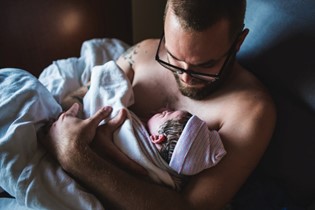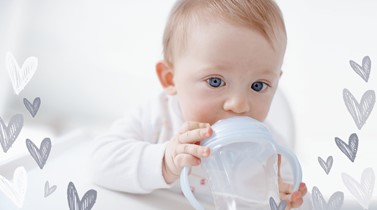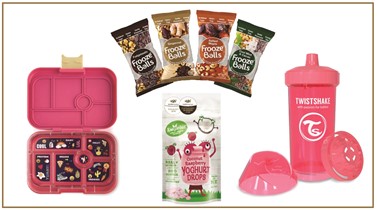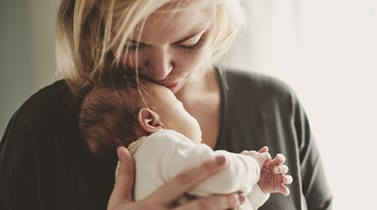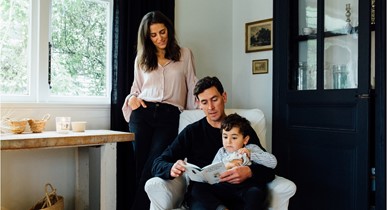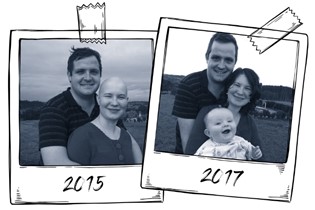Play therapists to the rescue
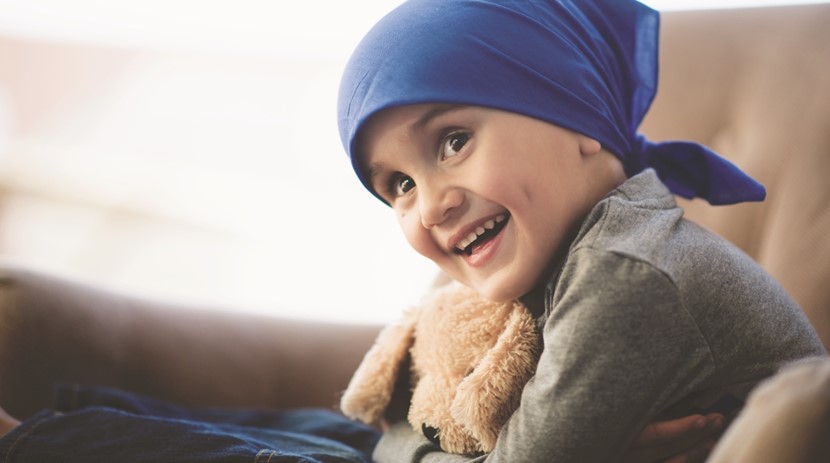
Working alongside doctors and nurses are angels who play, specialists in helping children through tough moments. Catherine Tafto explores the healing power of play.
Nicola Woollaston is excited. The bubbly team leader of Hospital Play Specialist Service at Starship Hospital has just got word that her proposal, to pilot a full-time play specialist in the radiology department for two years, has been approved by the Starship Foundation. While being a play specialist might sound like it’s all fun and games, the work is real and it makes a big difference to the families and children who find themselves in hospitals around New Zealand, including our national children’s hospital, Starship.
Nicola says not only is play an essential part of childhood, it is also critical for normal development, and a meaningful way for children to make sense of what they are going through. “We work to make sure the children who come into Starship, some of whom are here for a long time, can fulfil their normal growth and development through play and social connection”, she says. Things like facilitating birthday celebrations and ongoing play between siblings might seem small, but to these families, they can be a really big deal.
There is a team of 20 play specialists at Starship. They look after children and their families, and work to maintain those relationships - in part by keeping things as normal as they can. “It provides routine and structure and joy, and it helps them to manage everything else that is going on” explains Nicola.
Play specialists work throughout the hospital and run the playrooms on each Starship ward. The playrooms are licensed hospital-based Early Childhood Education centres and provide a non-threatening space for children and whānau to relax and have fun. They are filled with the early childhood centre staples of play dough, puzzles, books and crafts, but also toys that help explain medical procedures.
Working with children and their whānau to help them cope with procedures and treatments, along with being in an unusual environment, is a key part of the job. “We can’t change the fact that your child is in hospital; our job is to help your child find a way to manage that experience” says Nicola.
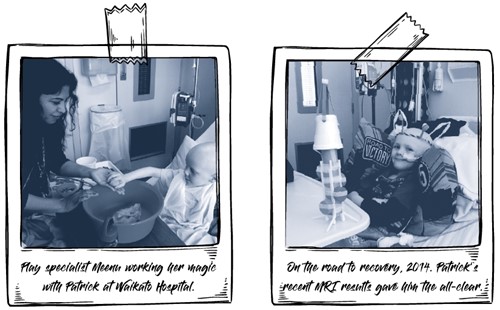
🎈 Power play 🎈
Children lose much of their autonomy in the hospital environment and they often require procedures and treatments that can be scary and stressful for them. Play specialists work with the children to help them negotiate some choices, while still allowing the treatment to go ahead. This might mean something as simple as giving them the choice of which arm will be used, whether they want to watch or look away, or whether they come down the hallway taking fairy steps or giant leaps. Encouraging children to participate in their care restores some independence and power, which can make a difference to how the child copes with the experience.
When children are scared of a procedure, play specialists can often take the time to find out where that fear is coming from. Children’s perception of events can be so different to adults, and their fear can be based on a (possibly faulty) interpretation of a previous experience. Nicola explains the instance of a child who was scared of having a mask for a general anaesthetic. It turned out she had seen a grandparent wearing one before they passed away, and associated the mask with that experience. A key part of the role is working to identify issues early on, and have plans in place to support the child and caregivers to prevent problems arising. However, this isn’t always possible, and when a child comes in without any preparation, the nurses are experts at identifying when the assistance of a play specialist will help, and send an urgent referral.
Nicola remembers being called to a room where a little boy was in the foetal position, absolutely terrified of having a blood test done. “Once I had some time to talk to him and find out what he was afraid of, it turned out it was the tourniquet which would be used to go around his arm. He thought it was to restrain him, and talking to the parents, he had had a terrible blood test experience earlier” says Nicola.
It is not only the children that need reassurance and to be talked through the procedures. Parents might have their own fears and concerns, or declare that their child doesn’t do blood tests, and so the play specialists work with them both. This often includes explaining how medical procedures have changed, for example, an IV line isn’t in fact a needle, but a small plastic tube. “Something as simple as giving a parent a role, like rubbing the child’s arm, provides comfort to the child but also gives a job and a distraction to the parent”, Nicola explains. If they are scared of a test hurting, the clinicians have other tools in their arsenal, such as cold sprays and numbing creams.
Explaining procedures, and breaking them down into more manageable ideas that children and their families can understand, is important in getting them on board with the treatment and understanding why they need it. “If you have a child with a brain tumour, and they have had surgery and then they need radiotherapy or chemotherapy, that can be really hard to understand” says Nicola. To explain why the ongoing treatment is needed, she shows children a ball of play dough and then wraps it in play dough of a different colour. When you remove the play dough ‘tumour’, there are residual pieces of that colour left.
🎈 Personal play 🎈
With different ages, stages, temperaments, previous experiences, treatments and family dynamics, the needs of every child are different. Play specialists develop individual care plans outlining what will make treatment and procedures more manageable for that child. These will often be put on the wall of a child’s room, and discussed with the child’s support people. “If we empower the child and their caregivers, they know what their strategy is so they can advocate for themselves” says Nicola. “This is one of the approaches that can make their stay easier.”
In October 2014, Amy Roberts was home with four-year-old Patrick and ten-month-old Caeley. She noticed Patrick had a lump in his leg, which was concerning enough for a doctor’s visit. It was discovered that Patrick had a rare childhood cancer, rhabdomyosarcoma. Patrick’s treatment plan was a minimum of 12 months of chemotherapy, surgery and radiotherapy, and a compromised immune system meant limited contact with family and friends. His treatment ended up taking 16 months.
“The paediatric nurses are great. They are kind and they are good at their jobs, but they are really busy. They don’t have the time to sit and talk and explain everything, so the play specialists do a great job of bridging that gap” says Amy. “They have time and they have knowledge of the procedures, and they build a rapport with the children.”
At Starship, the oncology ward had its own playroom, but the Roberts family also spent time at Waikato Hospital, where there is only a general play room which Patrick was too vulnerable to visit. “We couldn’t leave our room” remembers Amy. “Our very very small room.” With an impatient four-year-old patient, and a one-year-old sister in tow, it was not easy. The sight of play specialist Meenu bringing puzzles, play dough in the shape of a giant cupcake, or another oncology patient for a game of cards was always a sight for sore eyes.
For Amy, the play specialists were a breath of fresh air in a world full of medical jargon, treatments and procedures. “They acted as a link between us and the medical world, and when they came in, Patrick knew they weren’t going to hurt him. Sometimes they helped with procedures, or used play to relax Patrick or explain something to him, but sometimes it was just fun, exciting play, which we all needed.” They also put her in touch with Te Aho o Te Kura Pounamu, The Correspondence School, so Patrick could do correspondence kindy.
🎈 Purposeful play 🎈
Nicola was working at Waikato Hospital in 2015 when she initially met Amy and Patrick. Amy mentioned Patrick was facing 23 sessions of radiotherapy and she had been told he would need a general anaesthetic for every session, as he was too young to keep still. Amy didn’t like the idea of that many anaesthetics day after day, so Amy and Nicola proposed a different approach and worked together to develop a plan for Patrick to manage the treatments without general anaesthetic. They made a special bean bag for him, and Amy read to him through a microphone throughout the session, although he couldn’t see anyone. While the radiology ‘blasting’ took 10 to 20 minutes, with the preparation and precise positioning required, he was often in the treatment bed for up to 45 minutes - no mean feat for any small child. “I love seeing kids feel like they have the ability to manage their healthcare experiences. When Patrick finished his first session, and had done it without the general anaesthetic, Amy sent a photo of him with his thumbs up and it was just fantastic” remembers Nicola.
While Patrick is in remission, he has a range of tests done every four months. Nicola was on hand for his latest MRI, which he also managed without a general anaesthetic. “Working with Patrick again was a good example of how the procedures that cause concern aren’t the ones you might expect” explains Nicola. Amy and Patrick weren’t worried about the MRI, but were concerned about the intravenous line he needed before the procedure, as previously he had always had a port (a small medical appliance that is installed beneath the skin and connected to a vein). It was also an example of different techniques for different kids. “Someone suggested some music to distract him, but I said ‘No way – he’s a dancer’” laughs Amy.
🎈 S.O.S play 🎈
Which brings us back to the proposal recently approved by the Starship Foundation, the charitable social-profit organisation which raises funds so Starship can better care for its young patients. “Having a full-time play specialist in the radiology department is going to be amazing. This means there is someone there whose primary focus is to support children having procedures such as x-rays, CT scans, MRIs and ultrasounds, which we anticipate will reduce the number of children needing general anaesthetics” explains Nicola.
Play specialists also work in the emergency departments at Auckland Hospital and Middlemore Hospital. Olivia Marti is a paediatric nurse in a busy emergency department and is passionate about the role of play specialists and the impact they have on the nurses’ work. She says the scope of the role in an ED is very broad, and can be quite different to that on the wards. The ED is always busy and patients aren’t usually in there very long. “Because of the demands of other patients, I can’t take the time to explain things” says Olivia. “The play specialists can spend one-on-one time with a patient which means, when I come back in half an hour to place an intravenous line in, I know they’ve had it explained in a child-friendly way and had a chance to ask questions.”
Olivia also values the support the play specialists give to parents. In the emergency department, medical staff need the help of caregivers, who can be exhausted and feel out of their depth in an unfamiliar situation. “I might ask a parent to give the child a certain amount of rehydration fluid in a set period. The play specialists can quickly build rapport, and gauge what techniques a child will respond to, and can then work with the parents to achieve that goal” says Olivia.
In the emergency department, families can arrive together because something has gone very wrong, very quickly. Siblings who are medically fine are the least prioritised by the medical staff, so the play specialists step in. Olivia says the knowledge and expertise of the play specialists takes a huge weight off the medical staff and the families, and will be hugely significant in the siblings’ life. “Play specialists are a crucial part of the team, and I can’t think of a time in a child’s journey through the medical system where a play specialist wouldn’t be beneficial to the family or the wider members of the healthcare team” says Olivia.
Nicola says that children are capable of a lot, especially with the right guidance and support. “Because we have play in our title, people sometimes devalue our work. As a society we don’t place value on play, but by using play to help children in hospital, it is less stressful and they are more involved in their care – which leads to better health outcomes.”
🎈 NICOLA’S TIPS TO HELP KIDS COPE 🎈
1. Even little ones benefit from a simple explanation: for smaller children, closer to the time of the procedure is better.
2. Explain how long a procedure will take by linking it to something they already know, eg it will take as long as it takes to sing happy birthday or blow out a candle.
3. Bubbles are a great distraction. They also encourage slow deep breathing, which decreases anxiety.
🎈 There are nearly 130,000 patient visits to Starship Children’s Hospital every year by children from all over New Zealand. Starship Foundation is a social-profit organisation that raises funds so Starship can better care for its young patients. Donate to the Starship Foundation today at starship.org.nz/donate. 🎈
Catherine lives in the country with her husband, balancing a freelance career with raising their three wonderful boys.

AS FEATURED IN ISSUE 39 OF OHbaby! MAGAZINE. CHECK OUT OTHER ARTICLES IN THIS ISSUE BELOW




